Here you would find the best desktops that can run Solid Works seamlessly. Read the guide that would let you know of the things necessary when one has to go beyond the options mentioned here and make a choice of their own.
TOP PICKS:
In This Article
Minimum & Recommended System Requirements for SolidWorks
For SolidWorks, the minimum specs are anything above a 3 GHz processor, preferably a certified video card, 16 GB or more memory, and an SSD in the system for overall better performance.
Both Mac and Windows OS are supported, but only certain ones for the former, and the 64-bit versions of the latter can run the software.
The kind of desktop best for you would be determined by the way you’d like to run SolidWorks and your budget. But, here are some suggestions that could make things simpler.
Minimum System Requirements: Intel Core i5-11400F | 8GB RAM | NVIDIA GeForce GTX 1650 | 500GB NVMe SSD and 1TB HDD.
Recommended System Requirements: AMD Ryzen 9 5900X or better processor | 64GB RAM or more | NVIDIA GeForce RTX 3080 or better GPU | 1 TB of PCIe NVMe M.2 SSD and 8TB HDD or more storage.
5 Best Desktops for SolidWorks:
1. CLX Set TGMSETRTH0B10BM Gaming Desktop – Overall Best
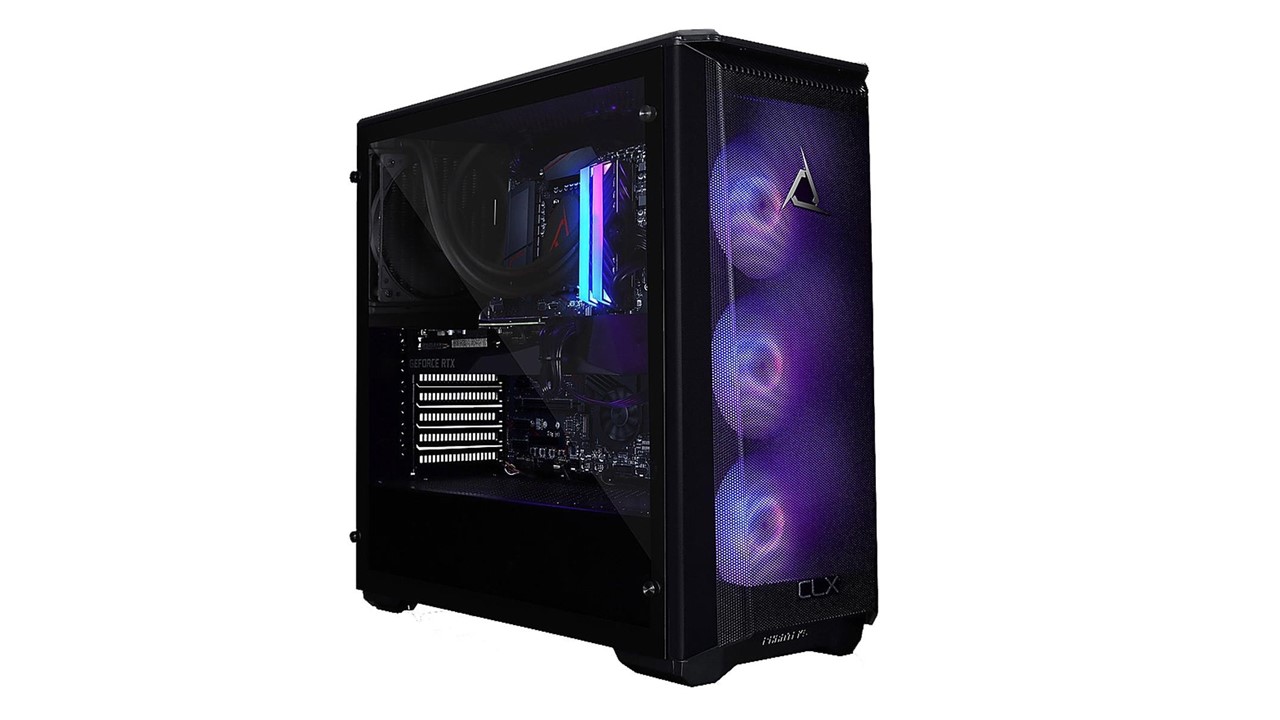
Bottom Line: CLX Set TGMSETRTH0B10BM gaming desktop is the overall best option for professional designers using SolidWorks, offering top-notch processing and liquid cooling technology.
Key Features:
- Processor: AMD Ryzen 9 5900X
- Graphics: NVIDIA GeForce RTX 3080
- OS: Windows 11 Home
- RAM: 32GB
- Storage: 480GB SSD and 3TB HDD
Pros
- Liquid-cooled
- Built Wi-Fi technology
- Massive storage capability
Cons
- Updated USB ports are missing
- USB Type-C port is missing
- No optical drive support
The CLX Set TGMSETRTH0B10BM gaming desktop is the perfect option for professionals who use SolidWorks.
This desktop is built with top-notch hardware components that are designed to deliver top-quality performance.
The processor installed in this desktop is a high-performing chip, named AMD Ryzen 9. It guarantees speedy and efficient processing.
This makes it an ideal choice for professionals who require a fast and smooth operation of their software.
Additionally, this desktop features liquid cooling technology that helps to keep the temperature of the device under control, even when running demanding applications such as SolidWorks, and Adobe Illustrator for a long time.
Furthermore, the VR-ready graphics card ensures that you can enjoy seamless 3D modeling and simulations.
2. ROG Strix GA15DK Gaming Desktop – Runner Up
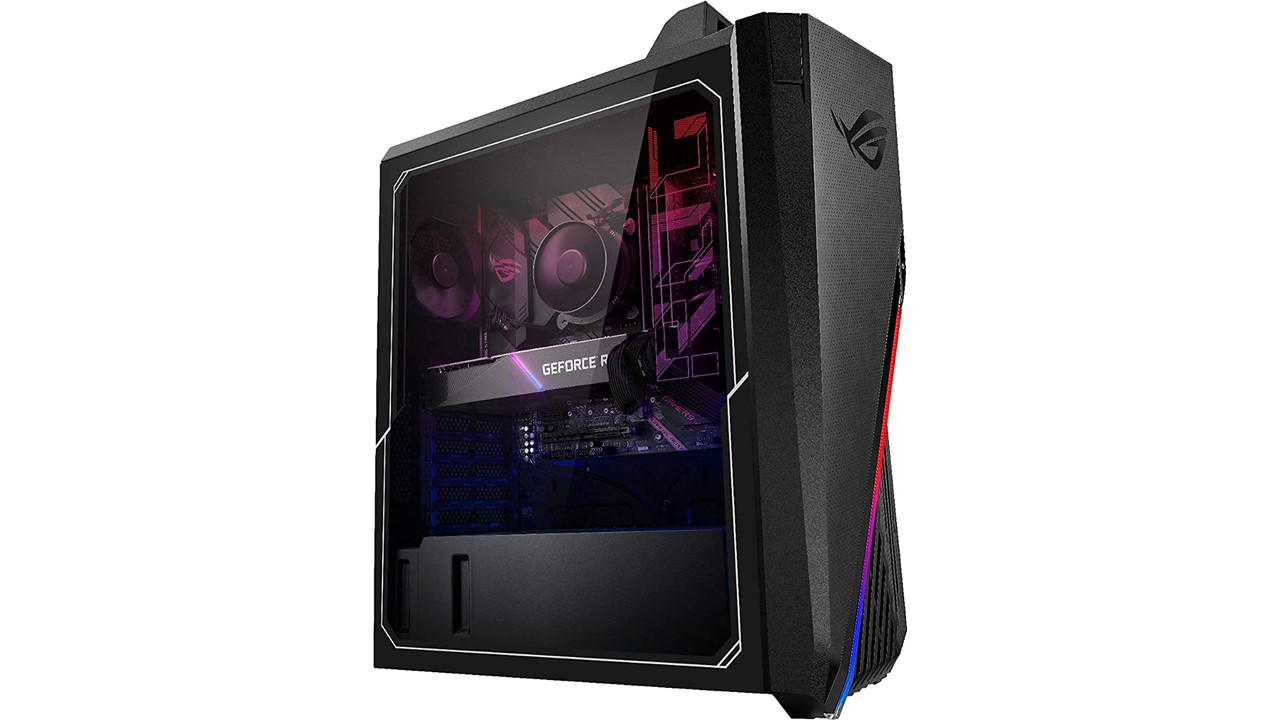
Bottom Line: This desktop offers mid-range specs that are more than enough for SolidWorks users. With its fast processing, good file transfer speed, and RGB lighting, anybody can be pleased and it is the runner-up desktop on our list.
Key Features:
- Processor: AMD Ryzen 7 5800X
- Graphics: NVIDIA GeForce RTX 3070
- OS: Windows 10 Home
- RAM: 16GB
- Storage: 512GB PCIe NVMe M.2 SSD and 1TB HDD
Pros
- Chassis has RGB lights and a transparent side panel
- USB Type-C support
- Runs silently
Cons
- Very bulky design and is not upgradeable
- Not compatible with old operating systems
- High maintenance cost.
The ROG Strix GA15DK is a top-performing computer that’s ideal for engineers and designers who use SolidWorks.
With its powerful AMD Ryzen 7 5800X, this desktop can handle even the most demanding applications with ease.
The NVIDIA GeForce RTX 3070 graphics card ensures smooth and seamless 3D modeling and simulations, making it the perfect choice for those who require high-quality visuals.
It features RGB lighting that provides a stunning visual experience and adds to its overall aesthetic appeal.
All these features make the ROG Strix GA15DK a good option for those who need a powerful and reliable computer to run SolidWorks.
3. YEYIAN SAI X11 Gaming Desktop – Value for Money
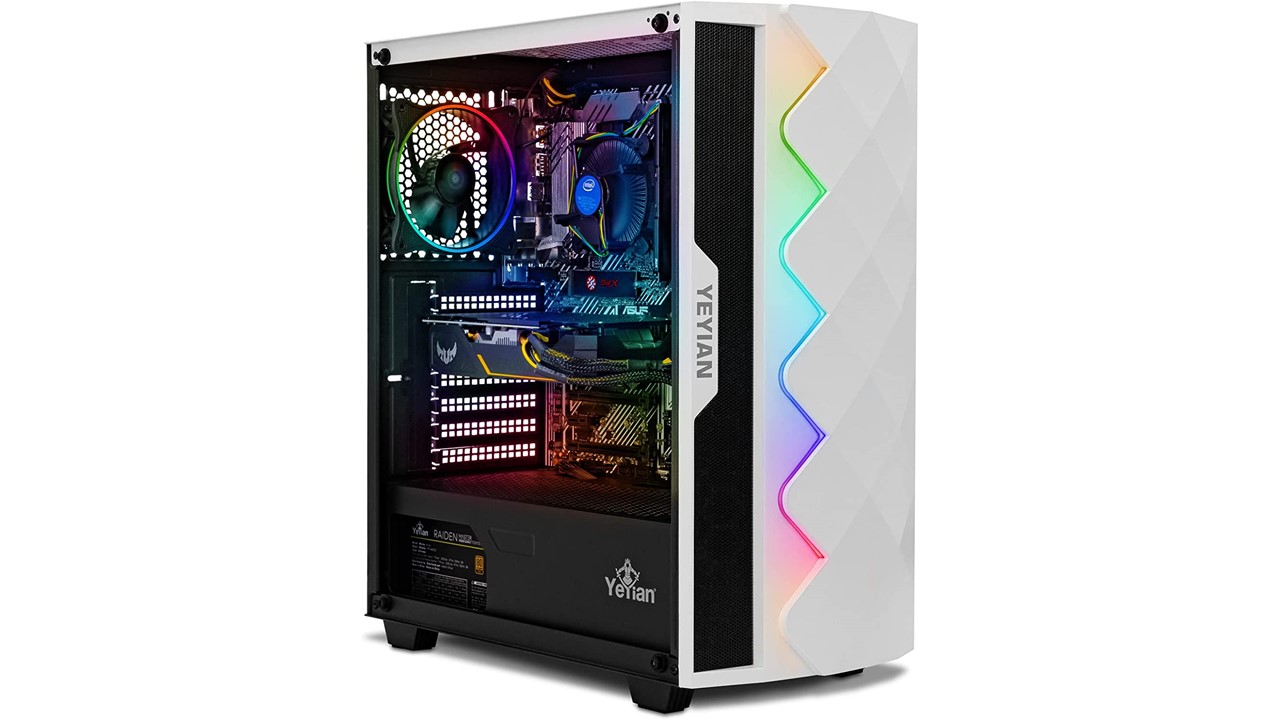
Bottom Line: This desktop comes with a very decent amount of specifications and is available at an affordable price tag. Entry-level designers who use SolidWorks should choose this option for their work.
Key Features:
- Processor: Intel Core i5-11400F
- Graphics: NVIDIA GeForce GTX 1650
- OS: Windows 11 Home 64-bit
- RAM: 8GB
- Storage: 500GB NVMe SSD
Pros
- Powerful i5 processor
- Good connectivity features
- Color adjustable three RGB ring fans and tempered glass panel
Cons
- The power supply is low according to the configuration
- No thunderbolt port
- Not made for performing very high-end tasks
This YEYIAN desktop is a great value-for-money option for those who need to run SolidWorks.
This desktop is powered by an Intel Core i5-11400F processor that delivers fast and efficient performance, making it ideal for entry-level users.
The NVIDIA GeForce GTX 1650 graphics card provides smooth and seamless 3D modeling and simulations, so you can work on your projects with ease.
Additionally, this desktop is affordably priced, making it an accessible option for those who don’t want to break the bank.
With its compact and stylish design, the YEYIAN desktop is not only a great option for running SolidWorks, but it also looks great on your desk.
4. HP Omen 30L Desktop – For Students and Non-Professional Users
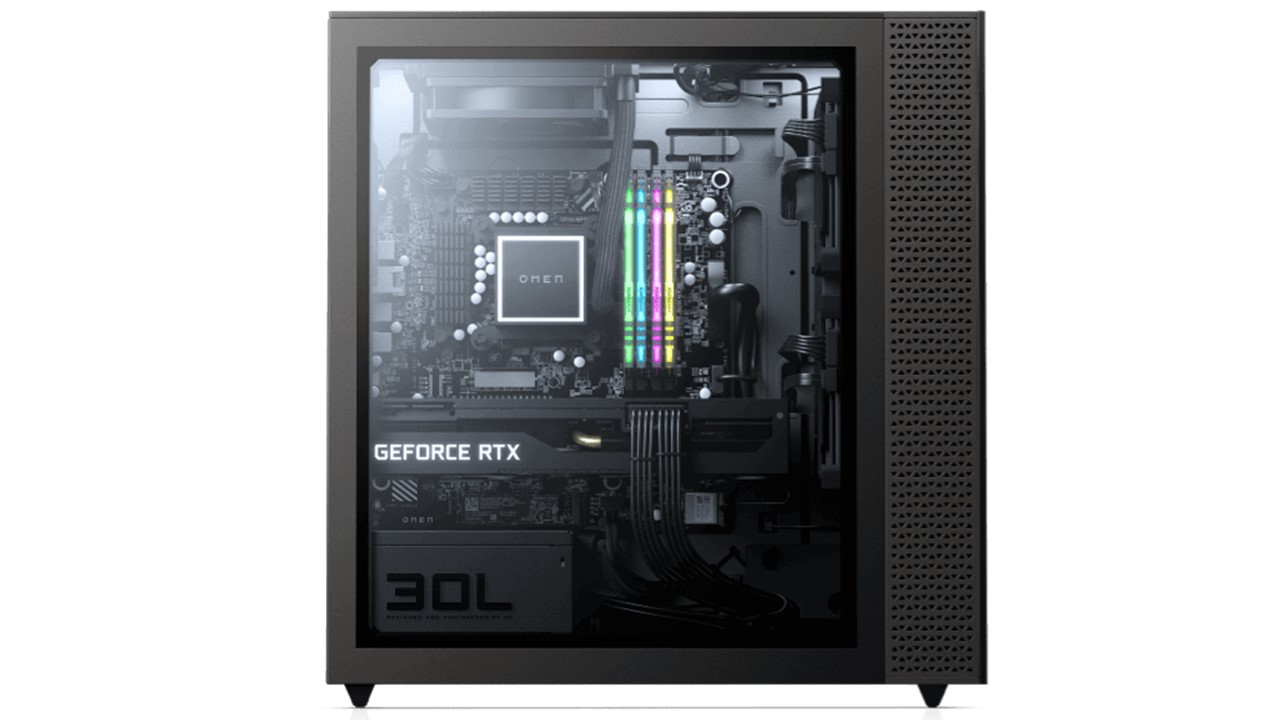
Bottom Line: If you’re looking for the best consumer desktop to learn or compile heavy projects on SolidWorks, the HP OMEN 30L is one machine that you must pay attention to.
Key Features:
- Processor: Intel Core i7-10700KF
- Graphics: NVIDIA RTX 3070
- OS: Windows 10 Home
- RAM: 16 GB
- Storage: 1 TB SSD
Pros
- Solid performer
- Decent specs
- Ample Upgradability
Cons
- Does not have features like ECC memory or ISV Certification
- Consumer-grade GPU has its flaws
- Windows 10 Home installed by default, not the Pro version
If you are into mechanical software or hardware, then you probably also know that professional components are preferable in this regard. That is true for SolidWorks as well, but not always.
What if you are a student that doesn’t need the added reliability? Or, you don’t have the requirement or budget presently to get these?
Well, in that case, mainstream devices, like this one can be of use to you.
The HP OMEN 30L, in this variant, brings a 10th gen Core i7 processor, an RTX 3070 GPU to handle heavy renderings at 1080p, 16 GB of RAM, and a 1 TB SSD.
All of this comes in an easily upgradable format, enclosed in a chassis that is neither too simple nor does it draw too much attention.
There are multiple other variants of the desktop as well, ranking both above and below this one in terms of performance.
Now it doesn’t make up for the absence of ECC memory and such, but the raw performance of the desktop often comes in handy.
So this allows you to run mechanical CAD or modeling software, and ample gaming performance on leisure.
5. Adamant Custom Workstation Desktop – Custom Prebuilt Workstation
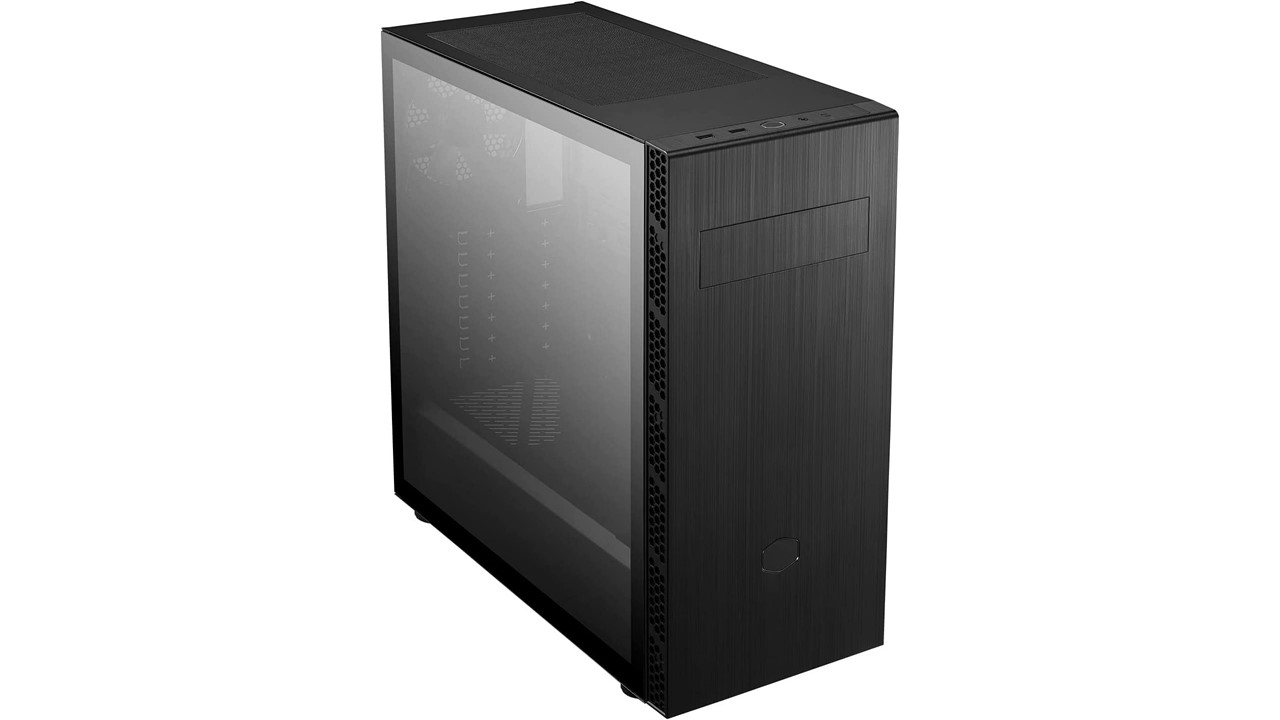
Bottom Line: This Custom prebuilt can be an alternative to building your desktop for SolidWorks, although you would have to pay a bit extra. However, the use of standard components and a good warranty raise a compelling argument in its favor.
Key features:
- Processor: Core i9-10900K
- Graphics: NVIDIA Quadro RTX 4000
- OS: Windows 10 Pro
- RAM: 64 GB
- Storage: 500 GB SSD + 8 TB HDD
Pros
- Minimalist Design
- Lots of configurations to choose from
- Good warranty period
Cons
- Not the best quality hardware
- Expensive
- Not the latest WIFI or Bluetooth versions
For anyone intending to use SolidWorks, it isn’t always possible to build a desktop. There can be a variety of reasons for this, but we are guessing the extra time and effort are a part of them.
So, the alternative to this is getting a custom built desktop, like this one from Adamant for example.
In this particular instance, you’ve got a Core i9 processor, an RTX 4000 GPU, 64 gigs of RAM, and a great amount of storage.
With these specs, you can expect to run SolidWorks heavily, and that too without any hiccups.
Unless we are talking about an insane number of parts or extremely complex projects, the specs should be good even for the intensive user.
All of this does come at a price of course, and it is not cheap by any means.
The good thing here is that you get all standard hardware, which means ease of upgrades and replacements.
Also, the case used is a minimalist one, without fancy RGB or such which makes it kind of suitable in a professional environment as well.
Also, the presence of a 3-year warranty would benefit you, should you decide to bring this desktop home or workplace.
Buyer’s Guide for Best Desktops for SolidWorks
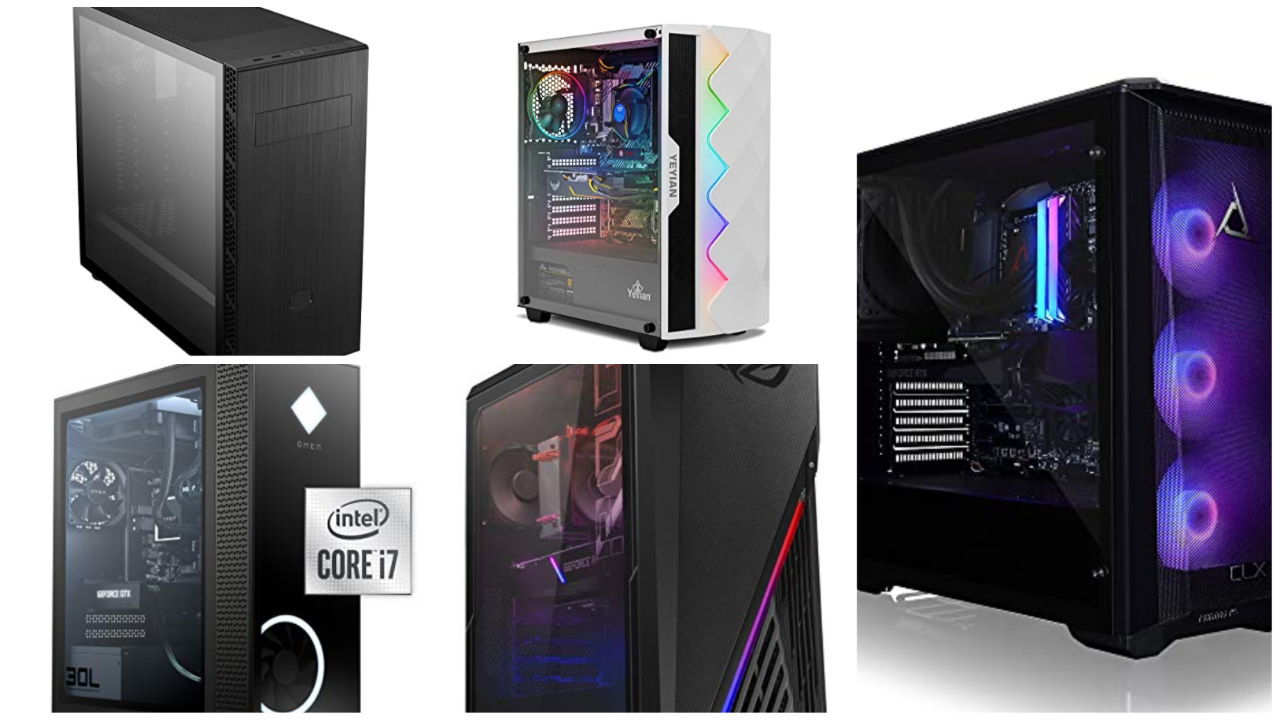
Now that you have seen the kind of desktops that one should be looking for, you must have got an idea too.
But 3D modeling or SolidWorks is not something that would work on a rough assumption.
It needs a certain minimum amount of specs ready in the PC for you to perform any serious work on it.
But this does not mean that you have to spend all the money you can, as the performance requirement depends directly on your needs.
We have talked about this later but, for now, know that not everyone needs a record-breaking setup.
Also, some might just need more powerful desktops than the majority, owing to the type of work they do.
Building a PC is more logical when you truly require the performance that these high-end specs have to offer.
The main reason is the price tag, as premium workstations can be very costly. At any given budget, building a PC or at least choosing the parts yourself individually can save some money.
Prebuilt options also limit choices, and you may not always get the preferable GPU and CPU in the same machine.
This is mostly the case when looking for high-end workstations, for example, one with a 10th gen Intel Core i9 CPU and a Quadro RTX 8000 GPU, at a not-so-berserk price tag.
This guide has much more of this, and we have also attempted to clarify some other queries that you may have. So make sure to give this a read.
Regarding the choice of the OS, you do not have much flexibility as SolidWorks is only supported by Windows, not by Mac or any other platform for that matter.
But does this mean an iMac or MacBook cannot run it? It can, but you’ll need virtualization software that would allow you to install it on the same device.
Examples of such are Parallels Desktop, VMWare Fusion, etc that allow you to use the same iMac as two separate desktops, one part with the native Mac OS and the other running on Windows.
So while the features of SolidWorks would be almost similar when run virtually as in this case without any trouble while installation, the experience would not be the best.
This is because the graphics capabilities in the desktops provided by Apple aren’t of the high-tier, and solely good processing won’t be enough for SolidWorks.
So no matter how much you spend, a professional Windows Workstation would still be a better option.
Processor
Like most other designing and modeling software, Solidworks depends largely on the frequency of the processor.
This means that the PC that you intend to use for SolidWorks has to have a good single-core performance, irrespective of the number of cores.
The count of the cores and threads would come to use when doing simulations, which would again need a better multi-core performance.
The workload is divided between the cores available, utilizing parallelization for faster executions.
But the number of cores is in no way as important as the processor frequency for Solidworks, although there are certain situations when more cores could be of help.
For the average user, anything more than 6 or 8 cores is not going to be of many benefits, but as per the official recommendations, the clock rate must be above 3.3 GHz.
The amount of RAM has a large role to play in processing, but we will come to that later.
So until you would be specifically running things that work better with multi-core processing, it is better to get a decent Hexa or octa-core CPU with as much clock rate possible.
So Intel with faster frequencies has a slight advantage over AMD, but the higher prices can be a concern for those on a budget. AMD is thus a money-saving option with a performance almost as good as Intel.
The Xeon processors are better than Threadrippers, with higher single-core speeds, though both have ECC memory support.
But unless working with highly complex arrangements with sensitive data, you need not opt for either of these as they would also require a specific kind of motherboard.
Should You Overclock?
You may think that with so much focus on processor frequency, what’s wrong with boosting it using overclocking?
There isn’t any wrong with it, except for two big problems, heat and system stability.
Tampering with internal voltages and temperatures is only good when done with extensive knowledge about them, or by professionals.
Trying to push a processor to its limits without taking note of thermals is going to do more harm than good.
Also, overclocking might lead to system crashes, and without ECC RAM, that is a more serious problem for SolidWorks.
So as a whole, overclocking is not the best way to go, especially if you plan on using the CPU for quite some time. A safe and viable alternative is the boosting ability that both Intel and AMD CPUs offer.
Intel’s Turbo Boost Technology and AMD’s Precision boosting can increase the processor frequency to safe limits, for a given time, keeping in tabs with thermals and other parameters of the system.
So, this is temporary overclocking, whenever you need it, without accidentally frying up your desktop.
Graphics
With good processing potential, your desktop also needs to be headstrong in the graphics department for the best SolidWorks performance.
The graphics requirements are so comprehensive that even the best gaming CPUs seem to be insufficient.
The reason for such heavy graphics requirements is the number of cores, and their frequency too. So what you need are workstation-grade alternatives, as provided by NVIDIA’s Quadro or AMD’s Radeon Pro series.
These GPUs are better in numerous ways, making sure that your desktop can handle heavy graphics, renderings, and such without a break.
One of the reasons for this is more Video memory that usually makes a lot of difference, and something exquisite to only some of the video cards, Tensor Cores. The ray-tracing video cards can provide added effects and even more powerful processing than usual ones.
The choice of the GPU is going to take a toll on your budget, with some video cards being extremely expensive.
There are some truly heavy-lifters that you can go for, like high-end RTX 6000 or RTX 8000 from Quadro’s RTX lineup.
Budget GPUs starting from the Quadro P1000 or Radeon Pro WX 4100 are present too for entry-level workstations.
For others, there are several options like the Quadro P1000, Quadro P4000, and even better Quadro RTX 4000 GPUs from NVIDIA, while AMD has some great options as well.
For a student or someone who doesn’t need the added features like the Quadro or Radeon Pro GPUs bring, there are the consumer cards. A 4-6 GB GTX GPU is much cheaper comparatively, and there won’t be much difference in performance figures either.
These, however, won’t promise you as trouble-free usage on SolidWorks as the professional video cards will, and this is a deciding factor for many.
But a GPU is good only if there is enough potential in the CPU, and the latest graphics drivers are installed.
SolidWorks 2019 also utilizes OpenGL 4.5 support, though finding it in any modern GPU should not be a problem.
RAM
The RAM is going to be a very important tool for the processor while processing and executing, especially when using software like SolidWorks.
With more intensive structures and assemblies, a large video memory can make a lot of difference.
There is no way one should be going for 8 GB or below RAM, as there would be a need to upgrade it very soon.
Those who are just starting might be good with that, but as the complexities increase, more memory is necessary.
On a professional level, even 16 GB of memory could be insufficient and some have got even more installed, say 32 GB.
It is proven that keeping all the other hardware specs the same, adding more RAM to the PC can bring about astonishing improvements.
Replacing the 8 GB of RAM with 24 GB in a given PC would largely reduce rendering times.
While 32 GB is the unofficial standard here, those working with millions of parts or very complex designs might need 64 GB of RAM too.
But this mostly depends on how you intend to use SolidWorks.
With certain processors, like a Xeon from Intel, you can add something like error checking and that can be quite an advantage for certain users.
But for a general user, that kind of reliability comes at a cost that can be utilized somewhere else in the PC or in buying more RAM.
Things get easier to decide with a higher budget, but ECC-supported hardware being pricey can still be a problem for most of us.
Make sure you don’t have to compromise other hardware for the greater reliability that the costlier ECC-supported processors or RAM modules offer.
Storage
If you haven’t yet accepted the superiorities that an SSD provides over a hard drive, it is time that you do so now.
And this isn’t without reason, as the reading and writing speeds of a mechanical drive are nowhere near to those of an SSD which doesn’t have any moving parts in it.
Solidworks would be using up a large number of system resources, so you have to make sure that you don’t compromise on storage.
To maximize the software’s performance, it is necessary to have an SSD installed on the PC.
The PCIe ones would be bringing about better results than SATA ones, as they are inherently the fastest kind.
The size of the storage drive is somewhat a personal decision, but it has to be on the higher side.
When working with large assemblies and graphics-intensive models, more and speedy storage is of the essence.
Hence anything equal to or above a 1 TB SSD should be fine, and even for beginners, we wouldn’t suggest going below that.
There isn’t a higher limit here, and while some of you might not need an 8 TB drive like the Adamant desktop (on the list above) has, some may still.
Connectivity
Based on the kind of software SolidWorks is, it doesn’t need an external device to function properly, except maybe a 3D printer and the peripherals. The most important connectivity for you to take care of is that with the Internet.
This can be through using wired Ethernet or Wireless WIFI, whichever you deem fit.
But this does not mean that you have to be online all the time, as the software can work offline too, as long as the activation is complete.
This is a one-time procedure that every user has to follow and can be done only with the help of an internet connection.
However, certain things inside the software are going to need the Internet, like when downloading the additional tools, presets, other add-ins, and updates.
As we said, regarding external connectivity there aren’t many requirements. Some spare USB 2.0 and 3.0 ports are all that you need, and a USB Type-C port can be advantageous for faster file transfers.
But more video ports are always welcome, and no matter what type, as long as they allow you to add the monitor(s) that you want, those are worth it.
Accessories
Your setup is going to be incomplete if there aren’t the right accessories present, which in this case would be a decent mouse and keyboard, and a decent monitor to work on.
Using SolidWorks is all about designing, sketching, and other visual elements. Being so, it must have a good resolution so that you can work comfortably with the utmost satisfaction.
The FHD (1920 x 1080p) is very much the standard, and you have to go beyond this for a better experience.
Thus come 2K (2048 x 1080p) and 4K (3840 x 2160p) displays at a higher price. As long as the frame rates are good enough, all you need to care about is color accuracy on these.
You would be working with colors mostly and complex designs are better when seen as realistically as possible. Some monitors can be rotated even, just to add to your convenience.
The choice of the monitor is somewhat personal, as not everyone is comfortable with the same resolution, screen size, or aspect ratio.
But there are monitors with such qualities dedicated to the use of designers that you can consider.
For the most productivity, it is better if you use more than a single monitor since using two screens can allow you to do different things at the same time.
The size of these can be the same, or one bigger than the other, whatever you feel best. Also, with long hours to work, having an anti-glare display can be to your advantage.
Questions & Answers:
Is CPU or GPU more important for Solidworks?
Both the CPU and GPU are important in SolidWorks, each in its sphere. The processor is responsible for running simulations, designing rendering, and such, while a good GPU can have its utility in handling graphics, which are a very important part of using the software.
Is 8GB RAM enough for Solidworks?
For beginners, maybe. For any serious user, not at all. SolidWorks requires a lot of memory at times, so the least that you should be going with is 16 GB. Although, be ready to upgrade to at least 32 GB soon enough.
Can you run SolidWorks without a graphics card?
SolidWorks can be run without a dedicated graphics card, but that isn’t recommended at all. It is a designing software and almost every major use case requires a good GPU with lots of cores and VRAM, often the ECC kind found in professional video cards.
Finishing up
The kind of work you do, and the kind of software that you use play a large role in deciding the specs you would need. While some of these might be sated with entry-level specs, others, like SolidWorks work better with a higher configuration.
The guide and the options herein would be of great help for anyone and everyone that comes across it.



